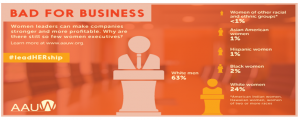From the history of Babel, humanity divided them based on racial and ethnic identity. Every ethnic group wants consolidation and believes in expansion, reservation, and glorification. They want to propagate their identity and ideology. This identity could also be the sexual identity of women and men are considered as two different race.
The term leadership talks about the capability of an individual within or beyond the racial identity. Everyone has the right to become a good leader it doesn’t matter what is the race or sex of the leader. Especially in the case of women or female leader, there should not be any racial differences, because of their sex. But in the real picture, we can see the differences; we can give enormous examples regarding that. We can also pictures’ the American presidential election as an example. It was assuming that this election is going to break the traditional glass ceiling in the United States. Of course, other political reasons are also there but many feminist believes another strong reason for Hilary Clinton’s defeat in the election is stereotypes about the leadership meaning.
If we consider the South Asian region we can find that Gender played a vital role deciding the place of individuals in the family as well as in the institutions. It is tough to break the existing glass ceiling in institutions and stereotypes from the patriarchic society. And in Middle Eastern countries like Saudi Arabia we can hardly find any women leader.
So we can say that there is a complexity of racism and leadership, especially when it comes about women leadership.

Gender-based racism and Leadership:
All human beings belong to a single species and share a common origin. They are born equal in dignity and rights and all form an integral part of humanity. All peoples of the world possess equal faculties for attaining the highest level in intellectual, technical, social, economic, cultural and political development. The differences between the achievements of the different people are entirely attributable to geographical, historical, political, economic, social and cultural factors. Such differences can in no case serve as a pretext for any rank-ordered classification of nations or peoples.
And racism refers any action or attitude, conscious or unconscious that subordinates an individual or group based on skin color or race. It can be enacted individually or institutionally.
We can project this racism also the subordination of individuals or any group based on their sex that can be also enacted individually or institutionally.
AAUW’s study experiment in 2012 examined different racial and gender identities where participants reported their reactions to a fictional senior executive with the components of black, white and male-female, and adopting the nature either dominant or communal leadership style. And the results or find shows that Black men and White women executives were rated more negatively for using dominance style of leadership instead of communal or participatory leadership. This research results from the question of the leadership capability of black women positively but another study shows that black women leaders face different disadvantages like the harsh punishment for mistakes.
Another study by John Williams and Colleagues found in their ‘prove it again’ experience that black women are more likely to be judged harshly for making mistakes in science and in other domains women and racial minorities have been underrepresentation historically.
Real world workforce data confirm that black women have faced the exorbitant steer to leadership positions. AAUW data analyses by US Employment Opportunity Commission on the private sector workforce revealed that the most underrepresented group at the executive level employees are women especially black women considering their participation and ability to handle the work.
Although we can find vast literature on the topic of leadership as a concept it is difficult to define. And when it comes to women leadership we can find so many debates. Some suggest that women have different styles to male leaders and these distinctive styles include the characteristics that include being more participatory, more sensitive, democratic, caring and nurturing, good conflict management also associated with women leaders.
The differences between women and men leadership have been examined in several studies that exhibit that women adopted a more democratic or participative style while men adopted more autocratic or directive styles of leadership.
Further Reading Racism Vs Globalization: a Matter of concern
Leadership and Race in Asian Societies
In this era of globalization and global economy, the rise of Asia led by China is one of the most important features of the twenty-first century. The countries like Japan, China, India, Korea and regions of Southeast Asia are ready to create a new power base with population strength and economic might. Bur this region also has the problems of inequality, endemic poverty, and environmental degradation as well. To counter these problems Asia particularly the big countries like China and India should give preferences to enhance gender equality and women participation in development sector including the enhancement of leadership opportunities.
According to available data, women hold just one in eight seats on the boards of Asia’s largest public companies. According to Corporate Women Directors International, in 2o Asia-pacific countries 1557 largest listed companies provide just 12.4 percent of board seats. And the comparison among Europe, North America, Africa, and Asia is far behind. In Europe, women hold 30 percent board seats among 500 top companies and North America the also the picture is similar to Europe. Women hold 14.4 percent of board seats at 300 top listed companies in Africa.
Asia’s countries especially China and India have to do a lot of work in their promotion of women leadership and participation in business, politics and social activities. World economic forum’s Gender Gap report of 2016 points out that India and China ranked poorly in the sector like education where India ranked 108 and China 91 out of 145 countries. Economic participation sector India ranked 139 while China 81. In political Participation, this ranks 9 for India while 73 for China. And in 2017 Data reveals that in Global index China places 100 and India 108, Economic Opportunities China ranked 86 while India 139; education sector the ranking is 102 China and India 112; health and survival china 144 and India 141, Political empowerment China ranked 77 and India 15. And considering Asia, South Asia is the second-lowest scoring region on Global Gender Gap Index.
Bangladesh and the Maldives are in the top-ranked countries within the region, having closed just below seventy-two and sixty-seven percent of their overall gender gap, whereas the lowest-ranked countries include Kingdom of Bhutan and Pakistan, having closed just below sixty-fourth and fifty-fifth percent of their overall gender gap. Only one country within the region, Maldives, has totally closed its academic Attainment gender gap; and Sri Lanka, has totally closed its Health and Survival gender gap. Of the seven countries from the region enclosed within the Index this year, 3 countries have enlarged their overall score compared to last year, whereas four have seen their scores in a decrease.
So we can point out the sectors of violence and discrimination that are taking place in South Asia in pinpoint like:
- The women are depriving of equal access to land, property, and housing.
- Economic discrimination leads the way of physical violence and sometimes it results in the poorer life choice for women.
- Another Important point is the denial of women’s reproductive and sexual health rights in South Asian society.
Further Reading Religious and Cultural Intolerance against minority: Muslim in Europe
The way forward:
Women’s rights are human rights that cover every sphere of life including health, education, economic well-being, political participation and freedom from violence, among several others. Women are entitled to the equal enjoyment of all of their human rights and to be free from all kinds of discrimination and this is the fundamental key to achieve human rights, peace and security, and sustainable development. In Asia, the picture of gender-based racism is acute in nature. Here are some suggestions that would help to preserve the equality and reduce the gender disparity in leadership.
- Enhancing the application of laws to decrease the pay gap based on gender.
- Workplace discrimination should be reduced.
- Women political participation should be encouraged.
- Say no to stereotypes.
- Leadership training should be organized for women.
- Initiate Equal opportunities for women.
- Increasing the payment negotiation skill of women through workshops and social awareness programs.
- International and regional organizational work should be enhanced and co-operated with the governmental efforts to reduce the stigma of gender-based racism in leadership.
writer
Alma Siddqua Rothi
MSS student, Center for South Asian Studies, Pondicherry University, India.
studied, International Relations, Jahangirnagar University, Bangladesh.
References:
- Asia’s Lack of women in Boards show it has work to do (https://www.ft.com/content/1b0d7abe-33ff-11e7-bce4-9023f8c0fd2e)
- 2. Breaking the Glass Ceiling Starts With Changing Workplace Culture; ( https://www.entrepreneur.com/article/292514)
- 3. CRACKING THE GLASS CEILING: ASIA’S NEXT CHALLENGE (https://pursuit.unimelb.edu.au/articles/cracking-the-glass-ceiling-asia-s-next-challenge)
- “Declaration on Race and Racial Prejudice” adopted by the General Conference of the United Nations Educational, Scientific and Cultural Organization, Article I
- Gender Gap report of 2016 and 2017; World Economic Forum (https://www.weforum.org/reports/the-global-gender-gap-report-2017)
- Gender Socialization; (http://www.sociologyguide.com/gender/gender-socialization.php)
- Gender and the Evaluation of Leaders: A Meta-Analysis Alice H. Eagty and Mona G. Makhijani Purdue University Bruce G. Klonsky State University of New \brk at Fredonia
- Patriarchy and Inequality: Towards a Substantive Feminism Mary Beckert; (http://chicagounbound.uchicago.edu/cgi/viewcontent.cgi?article=1266&context=uclf)
- Role of Women in decision making: A glimpse at south Asia; Alma Siddiqua & Shanaz Mohamed
- Status of Women Rights in South Asia: issues and suggestions; Alma Siddiqua
